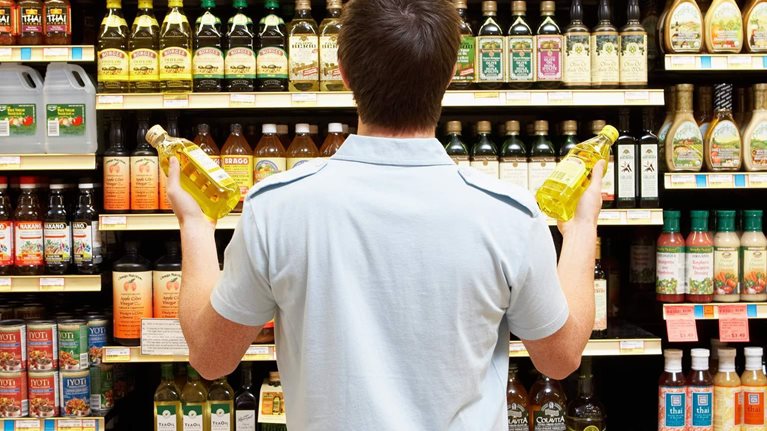E-commerce is here to stay, and it’s affecting every product category. Consumer packaged goods, which were once purchased almost exclusively in stores, have moved into the “digital battleground”—that is, consumers are increasingly researching and buying them online. Recent surveys indicate that nearly one in four US households already shops for food and beverages online; our research suggests that the number of US consumers buying health and hygiene products online could more than double within a year.
Stay current on your favorite topics
Meeting the online consumer demand—and perhaps stoking it, as well—are a rash of new pure-play competitors, some flush with cash from venture capitalists and private-equity firms. These new players are giving established manufacturers and retailers a run for their money. In the snacks category, for instance, start-ups NatureBox and Graze have quickly captured online market share and grown into hundred-million-dollar businesses.
But large consumer-packaged-goods (CPG) manufacturers aren’t standing still. To counter the threat of disruptors, and in response to constant margin pressure from retailers, many CPG companies are exploring ways to reach consumers directly through digital channels. And they’re no longer content to send out static, one-way marketing messages, such as emails or banner ads announcing a special sale. Instead, they’re looking to engage consumers in highly personalized, consistent interactions. Some CPG manufacturers are getting into the direct-to-consumer (D2C) game by scooping up fast-growing new entrants (see Unilever’s $1 billion acquisition of Dollar Shave Club), betting on start-ups (Campbell Soup’s $10 million investment in meal-kit company Chef’d), or launching their own D2C initiatives.
To be sure, D2C efforts in the CPG sector are still in their early days, lagging far behind D2C juggernauts in other categories, such as apparel: Nike, for instance, already generates more than $9 billion in D2C sales. And D2C may not make sense at all for certain products. A CPG manufacturer should carefully study how consumers typically shop for its products and brands, and how its products’ characteristics would affect online fulfillment. (Products that melt quickly in room temperature, for example, may be poor candidates for D2C channels.)
On the whole, there have been only a handful of hits and many misses among CPG companies’ forays into D2C, while for others the jury is still out. What sets the hits apart from the misses? We’ve found that success typically rests on four factors: a clear definition of D2C’s role, a hook to attract and retain consumers, a thorough plan for gaining the required capabilities, and a scalable economic model combined with a venture-capital (VC) mind-set toward metrics.
A crucial first step: Defining the role of D2C
A CPG manufacturer’s decision to engage directly with consumers could, of course, displease its retail partners. Therefore, a company’s D2C strategy shouldn’t stand alone; it must be integrated into an overarching channel strategy that anticipates—and seeks to resolve—channel conflict. We recommend that CPG companies start by deciding on the role their D2C channel will play: What do they really want their D2C efforts to achieve? The answer can be one of four options along a spectrum that emphasizes consumer insights on one end and sales on the other (Exhibit 1). The likelihood of channel conflict increases as companies get closer to the sales side of the spectrum.

An insight and innovation engine. Some CPG companies want an engagement platform that gives consumers incentives to share their opinions and preferences. Such a platform can give a CPG company a more comprehensive view of consumer behavior at every stage of the consumer decision journey. It can serve as a test bed for innovation—not just in product development but also for other commercial levers such as pricing or online merchandising. It also provides the foundation for delivering more personalized experiences over time. Frito-Lay, for instance, has conducted its “Do us a flavor” contest on dousaflavor.com for several years, offering consumers a chance to win $1 million for suggesting a new chip flavor. Consumers are encouraged to submit videos, photos, or essays describing their inspiration for it.
A platform for controlling the user experience. Companies that choose this option are most concerned about owning the communication of the brand story to consumers. They look to D2C as a means of sharing information and content (such as videos or narratives about product features) directly with consumers. Through D2C, they aspire to meet rising customer expectations and to provide a positive—perhaps even memorable—brand experience, aiming to be on par with companies (such as Disney) that have built a reputation for customer experience. Disney.com features media content such as movies, TV shows, and music; promotes the company’s amusement parks; and offers ideas for Disney-themed crafts, recipes, and parties.
An omnichannel marketing and sales engine. A CPG brand may want the online interactions of consumers to begin on its own website but to end at a retailer’s, where they can then purchase products. Through this type of D2C play, manufacturers can exert greater influence over how consumers engage online not just on their own site but also within a broader ecosystem that might include retailer sites and social-media networks. In this way, they can control the “zero moment of truth”—a term coined by Google to refer to the online research that consumers undertake before making a purchase.1 The Honest Company, for instance, offers subscriptions and sells products on Honest.com, but the site also has a “retail locator” helping consumers find stores that carry Honest products.
A sales driver. In choosing this role for a D2C site, a manufacturer is essentially deciding to become a retailer. At Keurig.com, for instance, coffee company Keurig offers a broad assortment of both brewing machines and coffee, a strong loyalty program, auto-delivery options, and a seamless reordering process. An e-commerce–enabled website can help a manufacturer to reduce its reliance on retailers and to hedge against disruptions in its retailer relationships. This is especially important in an environment where retailers are putting margin pressure on suppliers, weaker retailers are going out of business or being acquired, and all retailers view their consumer data and insights as competitive advantages and are therefore unlikely to share them with CPG manufacturers.
Would you like to learn more about our Consumer Packaged Goods Practice?
As Exhibit 1 shows, each of the roles requires different capabilities. Companies need to make clear decisions on trade-offs—in which areas do we need to be good and in which do we need to be great?—to avoid spreading their resources too thinly.
Typically, CPG manufacturers that choose the insights side don’t have the scale, brand equity, or financial resources to drive traffic to their own website. Companies that choose a sales engine tend to be single-brand organizations with very strong brand equity. That said, some CPG companies that ventured into D2C as a pure sales channel five or more years ago have rethought their approach—in part because of shifting consumer purchasing habits and the expense of driving traffic to D2C sites—and have gradually changed their websites to function more like insights engines.
Giving consumers a reason to visit again and again
Having settled on D2C’s role, a company must then determine what D2C model to adopt and what value the D2C site will offer consumers. Why should they visit the site? And after visiting once, why should they come back?
Companies that choose the same role for their D2C plays could opt for different D2C models. For instance, two manufacturers may both decide on a sales-driver role for their D2C sites. One manufacturer might opt for a subscription-based model; the other might offer the ability to customize or personalize certain products or brands. We’ve found that the choice of model doesn’t necessarily determine success or failure. Rather, what matters most is a clear and compelling consumer value proposition, or hook—a unique reason for consumers to visit the manufacturer’s D2C site rather than their favorite retailer’s website.
Time and again, CPG companies launch a D2C play without having first identified an unmet consumer need that the D2C site proposes to fulfill. These companies inevitably struggle to make the economics work, particularly for e-commerce sites; acquiring customers becomes prohibitively expensive, and retaining them quickly proves difficult. Therefore, setting a high bar on the consumer value proposition is paramount.
A broad and unique assortment—for instance, one that features exclusives, premium products, and personalization—can make for a distinctive consumer value proposition. A CPG manufacturer can pair assortment strategies with special services (such as a subscription service) to distinguish its D2C site from retailers’ sites, thereby attracting and retaining customers while also managing channel conflict.
Pricing, too, is an important element of the consumer value proposition. Prices on D2C sites shouldn’t be higher than retail prices; any premiums must be justified by some sort of value-added element—such as the convenience of a subscription or product personalization.
Making it happen: Build, partner, or buy?
Another hallmark of D2C success is agile execution and a mind-set bent on continuous improvement. Indeed, the most successful D2C players to date—such as Dollar Shave Club and NatureBox—operate more like technology companies than traditional CPG manufacturers. They take a rapid test-and-learn approach and are willing to “fail fast.” They make big investments in advanced analytics and use the results not just to personalize their offers but also to predict consumer needs. And they make careful decisions about whether to build D2C capabilities in-house, partner with one or more third parties, or make an acquisition (Exhibit 2).

Companies that opt to build capabilities typically create their own online store. Others go further and establish an omnichannel presence that includes branded brick-and-mortar stores, as Nestlé has done with Nespresso.
CPG companies that play mostly in low- or medium-volume categories often choose to partner, allowing them to test the D2C waters in a capital-light way. Decisions about which parts of the value chain to control and which to outsource should be informed by current in-house capabilities. For example, most large manufacturers don’t have the setup or tools for “kitting,” or fulfilling individual orders, so they choose to outsource those parts of the value chain.
To enter the fast-growing meal-kit market, Tyson Foods partnered with Amazon to sell Tyson Tastemakers meal kits. Mondelēz has partnered with Tmall to sell “giftable” products, such as Oreo gift packs, that are distinct from the manufacturer’s other online offerings; selling the products through Tmall also helps Mondelēz better understand Tmall’s customers. In both cases, the back-end distribution and logistics were managed by the marketplace e-tailer. Through this option, CPG companies can leverage the customer base, payments infrastructure, and distribution support of an established e-marketplace.
For CPG companies that want to operate their own websites but prefer to stay out of D2C fulfillment and delivery, last-mile partnerships are an option. Companies such as Boxed and Postmates can handle picking, packing, and delivery; start-ups like the UK-based Doddle and Happy Returns can manage returns.
To buy capabilities, CPG manufacturers can either acquire a company outright—as Unilever did with Dollar Shave Club—or “acquihire” talent, buying part or all of a company for its talent rather than for its products. To fill capability gaps in innovation and R&D, for example, NatureBox acquihired the Dean & Deluca product-development team.
Measuring D2C performance: Lessons from venture capital
Without a sustainable economic model, a D2C play will fail. We’ve found that CPG companies that successfully scaled up their D2C efforts were able to do so in part because they adopted a VC mind-set toward metrics. Some metrics just don’t matter that much in D2C—the number of impressions or the level of brand awareness, for instance—and CPG manufacturers shouldn’t waste time and resources on them.
Especially in categories that tend to be impulse driven or where the average basket size is small, CPG manufacturers must weigh the costs of customer acquisition, web hosting, and fulfillment against the benefits of a D2C play. CPG companies do best when they prioritize margins over revenues, and have a clear understanding of the factors affecting gross margins (for example, foods that require refrigeration will lower both gross margins and customer lifetime value). Companies that pursue omnichannel—rather than online-only—D2C plays tend to perform better. Managed well, one channel can complement and strengthen the other.

Winning in consumer packaged goods through data and analytics
In evaluating D2C plays, CPG manufacturers can learn from VC firms, which pay close attention to three types of metrics in early-stage D2C companies: general business indicators, drivers of high lifetime value (LTV), and low customer-acquisition costs.
General business indicators are common financial measures such as revenues, margins, internal rates of return, and cash flow. VC firms generally hold D2C companies to the following standards:
- Gross margin per customer should be at least six times the cost of acquisition.
- Year-over-year growth rate should be at least 50 percent.
- Capital investment should break even in four years or less.
- Cash flow should be consistent regardless of seasonal spikes in the business.
To achieve a high LTV, the average basket size should more than cover the associated cost of goods sold. A D2C site should either encourage frequent repeat purchases or require lengthy customer commitments (such as memberships of at least six months) and have low customer churn. As for keeping customer-acquisition costs low, one way to do so is to ensure that at least 10 percent of new customers come through word of mouth.
Consumers will continue to demand convenience and personalization, and digital channels will continue to advance—which means the D2C arena will only become more crowded and competitive. But not every CPG manufacturer should jump in; a company should first decide whether and where to play. Companies that choose to embark on a D2C journey should embed D2C into their broader channel strategy, beginning with defining the role of D2C and developing a compelling consumer value proposition. Then, with agile execution and stringent metrics, they will be well on their way to D2C success.


